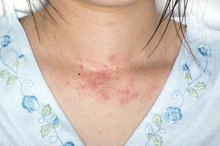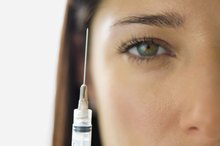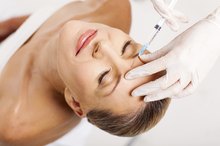AmLactin Lotion Side Effects
AmLactin lotion is a topical medication that contains the active ingredient ammonium lactate 1. This lotion is used to treat certain types of skin conditions that cause dry, scaly skin patches to appear across the body. Patients should discuss AmLactin lotion side effects with a medical professional before using this medication 1.
Burning or Stinging
Application of AmLactin lotion to the skin may cause burning or stinging sensations at the site of treatment, Kaiser Permanente warns 12. Though these side effects of AmLactin lotion may be uncomfortable, they are temporary and progressively subside within a few minutes of treatment 1.
Dryness or Peeling
Betaderm Side Effects
Learn More
The treated skin region may appear unusually dry or irritated during treatment with AmLactin lotion, Drugs.com warns 1. Patients may notice the treated skin begin to flake or peel. Skin dryness may also cause sensations of itching across the treated site. Frequent scratching of dry or irritated skin should be avoided to limit the risk of developing a skin infection.
- The treated skin region may appear unusually dry or irritated during treatment with AmLactin lotion, Drugs.com warns 1.
- Skin dryness may also cause sensations of itching across the treated site.
Bruising or Discoloration
The skin at the site of AmLactin lotion application may develop unusual bruising, redness or skin discoloration, RxList reports 1. The treated skin may appear darker than untreated skin; this side effect is referred to as hyperpigmentation. Patients who have concerns regarding these side effects should seek additional care from a medical professional.
Warnings
Deltacortril Side Effects
Learn More
Improper use of AmLactin lotion by hypersensitive patients may induce an allergic reaction 1. Signs and symptoms associated with an allergic or anaphylactic reaction include skin hives, facial or oral swelling and difficulty breathing. Patients who exhibit these side effects after using AmLactin lotion require emergency medical attention to limit the onset of additional complications 1. Due to increased risk of sunburn, protect treated areas from sun exposure.
Related Articles
References
Writer Bio
Rae Uddin has worked as a freelance writer and editor since 2004. She specializes in scientific journalism and medical and technical writing. Her work has appeared in various online publications. Uddin earned her Master of Science in integrated biomedical sciences with an emphasis in molecular and cellular biochemistry from the University of Kentucky College of Medicine.









